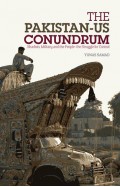- Home
- Non Fiction
- History
- The Revenge of Geography What the Map Tells Us about Coming Conflicts and the Battle Against Fate
The Revenge of Geography What the Map Tells Us about Coming Conflicts and the Battle Against Fate
By: Robert D. Kaplan
-
Rs 3,865.50
- Rs 4,295.00
- 10%
You save Rs 429.50.
Due to constant currency fluctuation, prices are subject to change with or without notice.
| Book | |
| What's in the Box? | 1 x The Revenge of Geography What the Map Tells Us about Coming Conflicts and the Battle Against Fate |
Monsoon The Indian Ocean And The Future Of American Power
By: Robert D. Kaplan
Rs 3,325.50 Rs 3,695.00 Ex Tax :Rs 3,325.50
The Revenge of Geography What the Map Tells Us about Coming Conflicts and the Battle Against Fate
By: Robert D. Kaplan
Rs 3,865.50 Rs 4,295.00 Ex Tax :Rs 3,865.50
Asias Cauldron The South China Sea and the End of a Stable Pacific
By: Robert D. Kaplan
Rs 712.25 Rs 1,295.00 Ex Tax :Rs 712.25
In Europes Shadow Two Cold Wars and a ThirtyYear Journey Through Romania and Beyond
By: Robert D. Kaplan
Rs 547.25 Rs 995.00 Ex Tax :Rs 547.25
Earning the Rockies How Geography Shapes Americas Role in the World
By: Robert D. Kaplan
Rs 2,205.00 Rs 2,450.00 Ex Tax :Rs 2,205.00
The Return of Marco Polo's World: War, Strategy, and American Interests in the Twenty-first Century - (PB)
By: Robert D. Kaplan
Rs 1,707.75 Rs 3,795.00 Ex Tax :Rs 1,707.75
Imperial Grunts - The American Military on the Ground
By: Robert D. Kaplan
Rs 841.75 Rs 1,295.00 Ex Tax :Rs 841.75
The Tragic Mind - Fear, Fate, and the Burden of Power
By: Robert D. Kaplan
Rs 6,171.75 Rs 9,495.00 Ex Tax :Rs 6,171.75
The Tragic Mind - Fear, Fate, and the Burden of Power
By: Robert D. Kaplan
Rs 3,596.25 Rs 4,795.00 Ex Tax :Rs 3,596.25
Zubin Mehta: A Musical Journey (An Authorized Biography)
By: VOID - Bakhtiar K. Dadabhoy
Rs 472.50 Rs 1,050.00 Ex Tax :Rs 472.50
Guns Germs And Steel A Short History Of Everybody For The Last 13000 Years
By: Jared Diamond
Rs 2,785.50 Rs 3,095.00 Ex Tax :Rs 2,785.50
The Last Nizam The Rise and Fall of Indias Greatest Princely State
By: John Zubrzycki
Rs 715.50 Rs 795.00 Ex Tax :Rs 715.50
The Origins of Political Order From Prehuman Times to the French RevolutioN
By: Francis Fukuyama
Rs 3,505.50 Rs 3,895.00 Ex Tax :Rs 3,505.50
Manning Up: How the Rise of Women Has Turned Men into Boys
By: Kay Hymowitz
Rs 646.75 Rs 995.00 Ex Tax :Rs 646.75
The Obama Syndrome: Surrender At Home War Abroad
By: Tariq Ali
Rs 1,165.50 Rs 1,295.00 Ex Tax :Rs 1,165.50
The Quest For Meaning: Developing A Philosophy Of Pluralism
By: Tariq Ramadan
Rs 1,255.50 Rs 1,395.00 Ex Tax :Rs 1,255.50
The Pakistan US Conundrum Jihadists The Military And The People The Struggle For Control
By: Yunas Samad
Rs 1,255.50 Rs 1,395.00 Ex Tax :Rs 1,255.50
An Enemy We Created: The Myth Of The Taliban Al Qaeda Merger In Afghanistan 19702010
By: Alex Strick van Linschoten
Rs 3,412.50 Rs 5,250.00 Ex Tax :Rs 3,412.50
WikiLeaks: Inside Julian Assanges War on Secrecy
By: David Leigh & Luke Harding
Rs 552.50 Rs 850.00 Ex Tax :Rs 552.50
Guns Germs And Steel A Short History Of Everybody For The Last 13000 Years
By: Jared Diamond
Rs 2,785.50 Rs 3,095.00 Ex Tax :Rs 2,785.50
The Last Nizam The Rise and Fall of Indias Greatest Princely State
By: John Zubrzycki
Rs 715.50 Rs 795.00 Ex Tax :Rs 715.50
No recently viewed books available at the moment.
Zubin Mehta: A Musical Journey (An Authorized Biography)
By: VOID - Bakhtiar K. Dadabhoy
Rs 472.50 Rs 1,050.00 Ex Tax :Rs 472.50
Monsoon The Indian Ocean And The Future Of American Power
By: Robert D. Kaplan
Rs 3,325.50 Rs 3,695.00 Ex Tax :Rs 3,325.50
The Revenge of Geography What the Map Tells Us about Coming Conflicts and the Battle Against Fate
By: Robert D. Kaplan
Rs 3,865.50 Rs 4,295.00 Ex Tax :Rs 3,865.50
Asias Cauldron The South China Sea and the End of a Stable Pacific
By: Robert D. Kaplan
Rs 712.25 Rs 1,295.00 Ex Tax :Rs 712.25
In Europes Shadow Two Cold Wars and a ThirtyYear Journey Through Romania and Beyond
By: Robert D. Kaplan
Rs 547.25 Rs 995.00 Ex Tax :Rs 547.25
Earning the Rockies How Geography Shapes Americas Role in the World
By: Robert D. Kaplan
Rs 2,205.00 Rs 2,450.00 Ex Tax :Rs 2,205.00
The Return of Marco Polo's World: War, Strategy, and American Interests in the Twenty-first Century - (PB)
By: Robert D. Kaplan
Rs 1,707.75 Rs 3,795.00 Ex Tax :Rs 1,707.75
Imperial Grunts - The American Military on the Ground
By: Robert D. Kaplan
Rs 841.75 Rs 1,295.00 Ex Tax :Rs 841.75
The Tragic Mind - Fear, Fate, and the Burden of Power
By: Robert D. Kaplan
Rs 6,171.75 Rs 9,495.00 Ex Tax :Rs 6,171.75
The Tragic Mind - Fear, Fate, and the Burden of Power
By: Robert D. Kaplan
Rs 3,596.25 Rs 4,795.00 Ex Tax :Rs 3,596.25
Guns Germs And Steel A Short History Of Everybody For The Last 13000 Years
By: Jared Diamond
Rs 2,785.50 Rs 3,095.00 Ex Tax :Rs 2,785.50
The Last Nizam The Rise and Fall of Indias Greatest Princely State
By: John Zubrzycki
Rs 715.50 Rs 795.00 Ex Tax :Rs 715.50












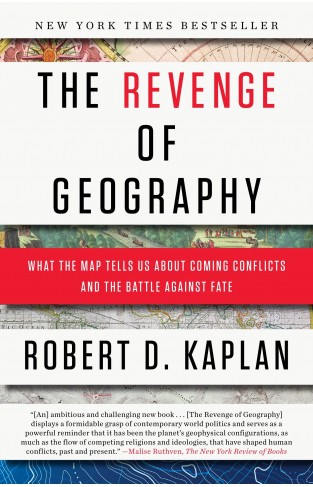
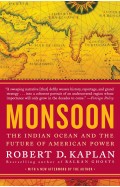
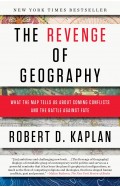
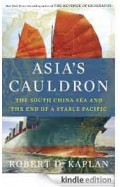

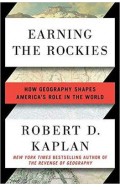
-120x187.jpg?q6)

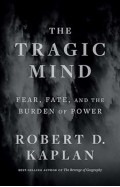
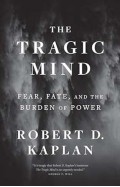
-120x187.jpg?q6)








-120x187.jpg?q6)



-120x187.jpg?q6)
